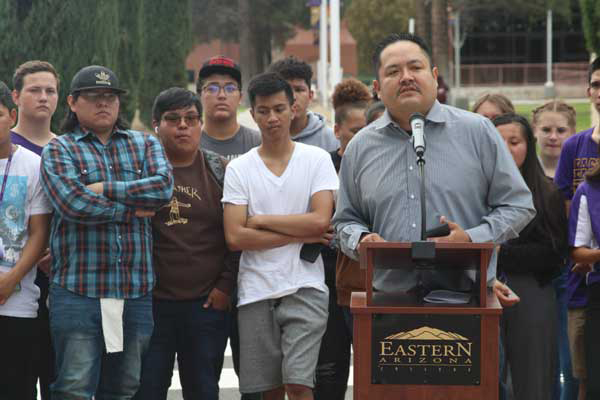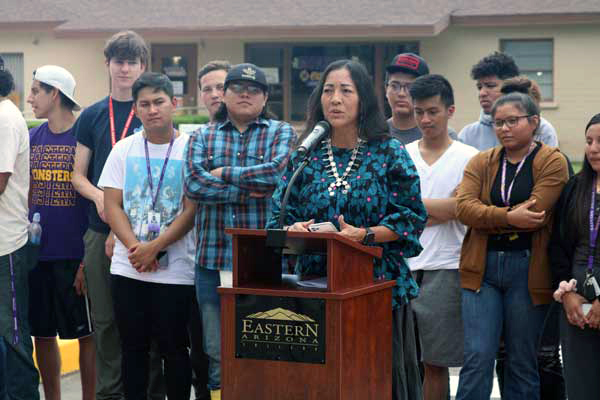THATCHER —The Intertribal Club at Eastern Arizona College was recognized Friday for its contribution to both the campus’ and the Thatcher community’s safety.
“The Intertribal Club focuses on the greater good, and completes projects that are for everyone in the community, not just the campus community,” said EAC President Todd Haynie.
The club completed upgrades to two pedestrian crossings — one on Church Street and the other on Railroad Street — that connect the north and south campuses, and the improvements were celebrated with guest speakers and a Graham County Chamber of Commerce ribbon-cutting.

“Leadership starts right where you guys are at,” San Carlos Apache Tribal Councilman David Nozie, of Bylas, told the club members. “So take this initiative that you’ve done here . . . take the learning tools . . . and take it to your people. And I’m speaking for all nationalities.”
The club created high-visibility crosswalks by including warning signage, enhanced striping and curb extensions.

Mary Kim Titla, a former journalist currently serving as executive director for United National Indian Tribal Youth, and a San Carlos Apache Tribal member and EAC alum, said the Intertribal Club is important because statistics show that three out of four Native American college students will drop out before graduation.
“This is why clubs off of tribal land are so important. They provide that support system, they provide a sense of community, they provide a sense of belonging,” she said.









